#robert devereux
Explore tagged Tumblr posts
Text


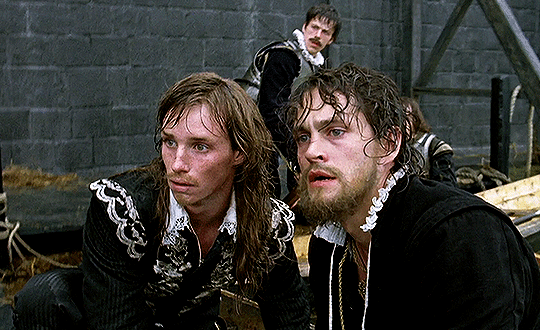




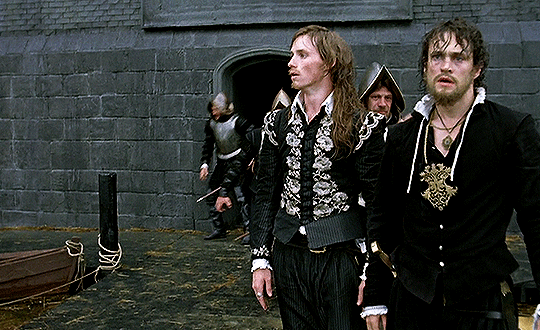
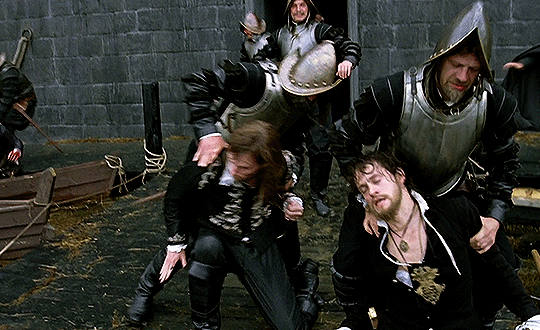
Elizabeth I (2005)
#perioddramaedit#hugh dancy#hughdancyedit#eddie redmayne#eddieredmayneedit#elizabeth i#tudors#robert devereux#Earl of Essex#southampton#bethmake#mistikfiredit
198 notes
·
View notes
Text
What you get when you order Robert Dudley from Temu:

20 notes
·
View notes
Text


earl of essex, robert devereux in helen mirren's elizabeth i, played by hugh dancy.
20 notes
·
View notes
Text
ON THIS DAY - 07 January 1619
On This Day (07 Jan) in 1619, Elizabethan portrait miniaturist and goldsmith Nicholas Hilliard, was buried at St Martin-in-the-Fields Church, Westminster.

Hilliard was born in 1547 in Exeter, one of four sons born to Richard Hilliard, a prominent goldsmith. Having been placed in the household of John Bodley, a young Hilliard accompanied his family to the Continent from 1553-1559, as one of many Protestant 'Marian Exiles'. On his return to London, he appears to have started his study of portrait miniatures, as well as likely receiving direct tutelage, prior to commencing his 7 year goldsmith apprenticeship in 1562, which he incorporated into his miniatures.

Hilliard painted his first portrait miniature of Elizabeth I in 1572, likely introduced by Robert Dudley, 1st Earl of Leicester, who would become his long-term patron. He remained in favour throughout the queen's reign, continuing to portray her with the 'Mask of Youth'.

In 1576, Hilliard married Alice Brandon, one of the daughters of his Goldsmith Master Robert Brandon, as his father had done before him; the couple went on to have seven children, the last three named for Dudley and those closest to him, as an act of gratitude for his continued patronage - Lettice (b.1583), Penelope (b.1586) and Robert (b.1588).

It is unsurprising, therefore, that many members of Dudley's family sat for Hilliard, with many portraits miniatures produced for various members including his second wife Lettice Knollys, Countess of Leicester, and her children from her first marriage: Penelope Devereux, Lady Rich and Robert Devereux, 2nd Earl of Essex.




Hilliard's specific date of death is not known, but it is likely to be around New Year 1619, early in his 72th year. His cause of death is also not known; however, it was reported that in his final years, he had been suffering from periods of gout and 'melancholia'. His burial date is confirmed in the parish register for the church - the only one in the parish that day, and recorded in the records as NICHOLAUS HILYARD.

See 'The Dudley Women' Blog Post for a more detailed look at the life, work, death and burial of Nicholas Hilliard:
#tudors#tudor#tudor history#tudor people#tudor art#tudor artist#Elizabeth i#Robert dudley#Lettice knollys#Penelope devereux#Robert devereux#Nicholas hilliard#tudor england#history#portrait miniatures#portrait miniature
2 notes
·
View notes
Text

Anyone hungry for Hugh content? Wanna see a pretty young brat get dommed and blue-balled by the Queen of England? If so, great news! Folie à Deux is streaming Elizabeth I Episode 2 this Saturday at 8 PM ET! Come join and chat with us about it live!
Folie à Deux is a creators' server open to all 18+ Hannibal & HEU creators! Come join us!
#fadserver#hannibal extended universe#earl of essex#robert devereux#hugh dancy#server stream#server event
11 notes
·
View notes
Text

The Earl of Essex ⚔️🩸The queen’s pet. 😌💕
16 notes
·
View notes
Text
In attempting to be funny while completing my history homework I believe I have managed to summarise a historical figure in six words.

You can add this to the conclusion of ANY section of his life! In conclusion, Essex made a tit of himself.
Ignoring Elizabeth’s express instructions, Essex made truce with the Irish rebels in a deal embarrassing to the crown. In conclusion, Essex made a tit of himself.
Striding into Elizabeth’s bedchamber unannounced, Essex, saw the Queen without her wig or make up. In conclusion, Essex made a tit of himself.
#The Earl of Essex#history#English history#Britain#Queen Elizabeth#history humor#robert devereux#humour#Earl of Essex#historical#rebellion#nerd humor#history nerd#school history#homework#england
3 notes
·
View notes
Text
thinking about the time i was ill and the only coherent thought i could summon for three days was 'robert devereux is a himbo'
2 notes
·
View notes
Text
This is a certified Robert Devereux, 3rd earl of Essex moment

0 notes
Text

¿So capa de virtud mis tuertos sufre? ¿He de llamar buen aire a su fiereza? ¿Vuela en pavesas todo el ardimiento? ¿Ponderaré sin fruto una maleza?
No, que alzada la sombra a par del bulto puede el turbio mirar sufrir engaño: es un frío adamar trazo en la arena o borbollar que aflora en un regajo.
¿Podrás luego mentirte una vez más, visto que nunca habrá de remediarte? Si no puedes vencer su inclinación será tu amor estéril sin rescate.
¿Tan bajo soy que no puedo aspirar al subido placer que de mí aleja...? Que si alto está, mi afán no es menos alto. ¿Pues qué será otorgado si tal niega?
Si acaso a la razón quiere avenirse, de razón es que amor se muestre ecuánime. Agráciame, mi dueño, con tal prenda o déjame morir si así te place.
Mejor morir, una y mil, que así vivir padeciendo: mas no olvides que fui yo quien por ti murió contento.
*
Can she excuse my wrongs with Virtue's cloak? Shall I call her good when she proves unkind? Are those clear fires which vanish into smoke? Must I praise the leaves where no fruit I find?
No no: where shadows do for bodies stand, Thou may'st be abus'd if thy sight be dim. Cold love is like to words written on sand, Or to bubbles which on the water swim.
Wilt thou be thus abused still, Seeing that she will right thee never? If thou canst not o'ercome her will The love will be thus fruitless ever.
Was I so base, that I might not aspire Unto those high joys which she holds from me? As they are high , so high is my desire: If she this deny, what can granted be?
If she will yield to that which reason is, It is Reason's will that Love should be just. Dear make me happy still by granting this, Or cut off delays if that die I must.
Better a thousand times to die, Than for to live thus still tormented: Dear, but remember it was I Who for thy sake did die contended.
Robert Devereux (?)/John Dowland
di-versión©ochoislas
#Robert Devereux#John Dowland#poesía isabelina#cancionero#despecho#desigualdad#disfavor#desengaño#muerte#di-versiones©ochoislas
0 notes
Text
Book and Writing Update

View On WordPress
#Anne Boleyn#Catherine Howard#Countess of Salisbury#Duke of Buckingha#Duke of Norfolk#Duke of Northumberland#Duke of Somerset#Earl of Essex#Earl of Surrey#Earl of Warwick#Edward Plantagenet#Edward Seymour#Edward Stafford#elizabethan rebellions#George Boleyn#helene harrison#Henry Howard#Jane Boleyn#Jane Grey#Jane Parker#John Dudley#Katherine Howard#Lady Jane Grey#Lady Rochford#Margaret Pole#owen emmerson#Pen and Sword#Robert Devereux#Thomas Howard#Thomas Seymour
0 notes
Photo
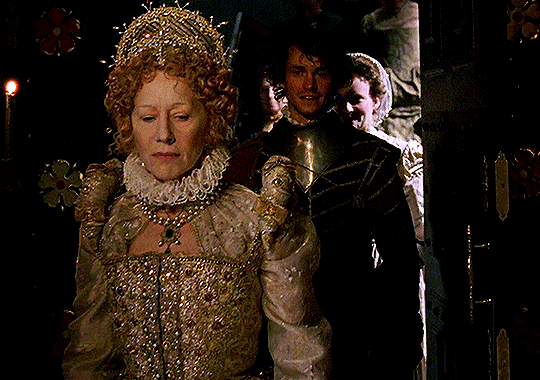

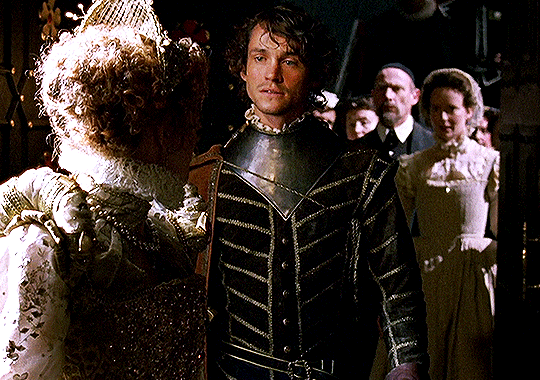
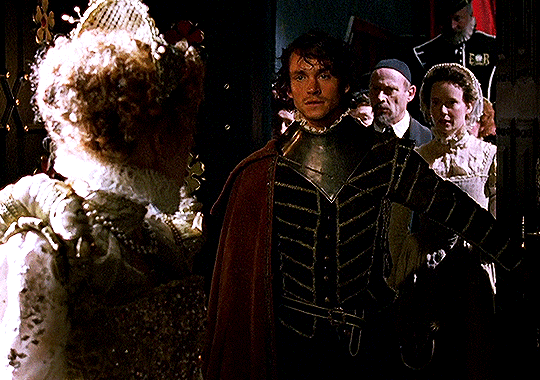
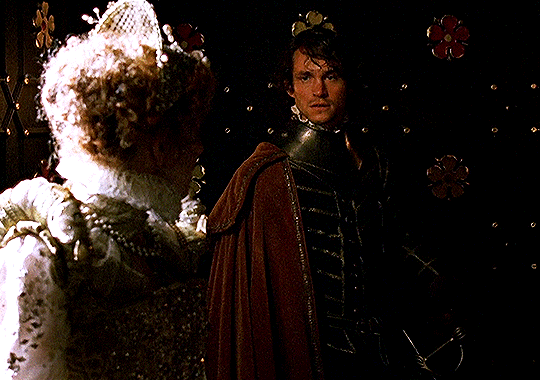
Elizabeth I (2005)
#helen mirren#hugh dancy#perioddramaedit#filmedit#hughdancyedit#elizabeth I#2000s movies#elizabeth tudor#robert devereux#tom hooper#bethmake#mistikfiredit#her costume is like a starry sky in the dark
277 notes
·
View notes
Text
The Young Man among Roses (fig. 1) may be Robert Devereux, 2nd Earl of Essex, painted when he was on the rise to become Elizabeth I’s chief favourite. He declares his political devotion to Elizabeth by posing as a love-melancholic with his hand on his heart. His black-and-white clothing uses Elizabeth’s personal colours, while the white roses that surround him were one of her emblems. In this case the languid posture of the melancholic is deployed at the pinnacle of court politics, to stake a claim to a special place in royal favour.
Helen Hackett, The Elizabethan Mind
8 notes
·
View notes
Text

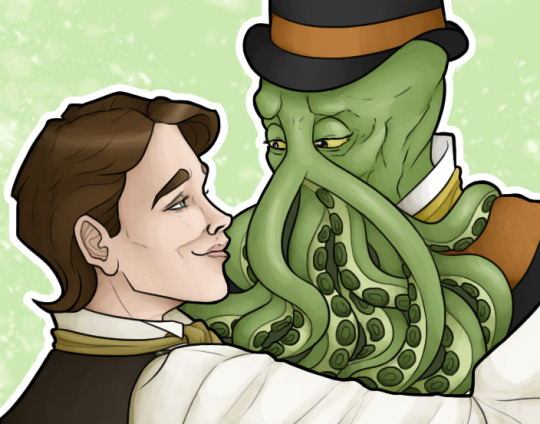
you two are dancing in a snow globe, 'round and 'round...
a little something for my fallen london pc jack and his boyfriend jerry the rubbery man, because they love each other very much and they deserve that love. and you know, sometimes a perfect couple can be a moderately successful author and his number one fan. who's a squid man. of course.
#fallen london#fl ocs#fallen london oc#juli's ocs#jack devereux#jerry the rubbery man#(i know his name is now jerry roberts but he's jerry the rubbery man lmao)#my art#MY BELOVEDS i love them so much this was very fun#i dont actually love it i dont think i painted that well but like who cares it looks so cute#consider this my valentine's piece woohoo
70 notes
·
View notes
Text
ON THIS DAY - 25 December 1634
On This Day (25 Dec) in 1634, 91 year old Lettice Knollys, Countess of Leicester, died at her home in Drayton Bassett, Staffordshire.

Lettice had made Drayton Bassett her primary residence in c.1593. The manor had been bequeathed to her following her husband Robert Dudley, 1st Earl of Leicester's death in September 1588. Initially, her right to inherit the manor and its lands, the lease of which Dudley himself had purchased in 1579, had been disputed; however, with the support of her son, Robert Devereux, 2nd Earl of Essex, Lettice was able to rightfully claim her inheritance.

Following her marriage to Sir Christopher Blount in 1589, the couple resided between Drayton Bassett and other properties previously belonging to Dudley, including Wanstead Hall, Essex and the eponymous Leicester House, on The Strand, Westminster. However, in the early 1590s, Lettice bestowed these properties on her son Robert, who renamed Leicester House as 'Essex House'; Essex House soon became a gathering place for the younger (and increasing disillusioned) Elizabethan generation, including where Lettice's daughter Penelope Devereux, Lady Rich continued her long-standing affair with Charles Blount, Lord Mountjoy.
On moving to Drayton Bassett, Christopher Blount, who had previously acted as Dudley's Master of Horse and had accompanied him on military campaigns, also began his political career, being elected as a Member of Parliament for Staffordshire from 1593, and Justice of the Peace from 1594. However, Blount continued with his military career, accompanying his stepson on his military campaigns, including the disastrous Ireland campaign in 1599; whilst Essex was imprisoned, Blount returned to Drayton, and his life with Lettice. Be it misguided support, or boredom of the country, but Blount was invited by Robert Devereux to join his ill-fated attempted rebellion, known as 'Essex's Rebellion' in February 1601, which ended in the arrest and execution of both men.
Lettice does not appear to have been alone at Drayton, with visits from multiple generations of her family. In 1593, her sister Catherine came to live with her, on the death of her husband, and her daughter Penelope (and her children) were also regular visitors, until her own death in 1607. Lettice also hosted the wedding of her granddaughter Frances Devereux in 1617, to William Seymour, the grandson of Katherine Grey and Edward Seymour.

As per her request set out in her will, Lettice was buried with her second husband Robert Dudley, within the Beauchamp Chapel, St Mary's Church, Warwick, in February 1635, with an elaborate tomb with matching effigies, funded by herself.

#tudor england#tudor history#history#tudor people#tudor#tudors#tudor women#robert dudley#lettice knollys#Drayton bassett#warwick#st mary's warwick#Christopher blount#Robert devereux
0 notes
Text

"God is my witness that as a private person I have done nothing unworthy of an honest man, and as Secretary of State, nothing unbefitting my duty."
francis walsingham during the october 1586 trial of mary, queen of scots
#🌊#sir francis walsingham#historical quotes#tudor history#elizabethan era#francis walsingham#history#i'm fully obsessed with him and robert devereux now.... save me!#tagging this with six idiots stuff because i couldnt resist putting a pic of larry in this.... sorry#bill 2015#laurence rickard#elizabeth i#geoffrey rush#mary queen of scots
11 notes
·
View notes